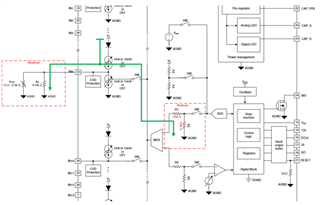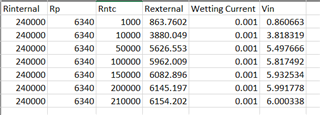Other Parts Discussed in Thread: TIC12400
Hi Team,
Is TIC12400-Q1 capable to bias and read analog temperature sensors (NTC) on the ADC inputs?
In theory this should be possible but there are questions:
- Wetting current is needed to bias NTC --> TIC12400-Q1 minimum wetting current setting is 1mA.
- As NTC is in range of ~1k to ~210k, voltage on NTC could be as high as 210V.... and this obviously violate TIC12400 input voltage range.
Is this (simple) consideration correct, or is there any other/better way to have TIC12400-Q1 bias and read NTC values?




